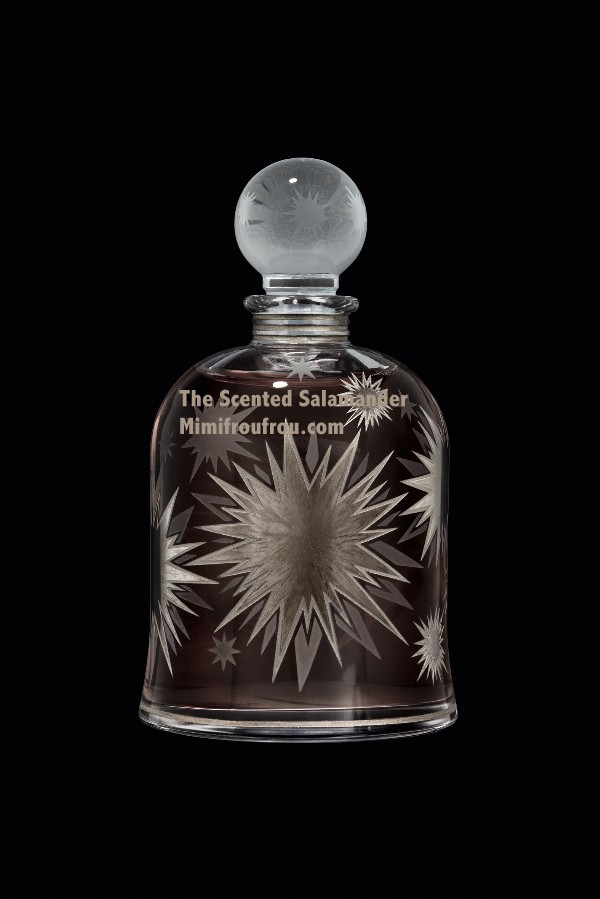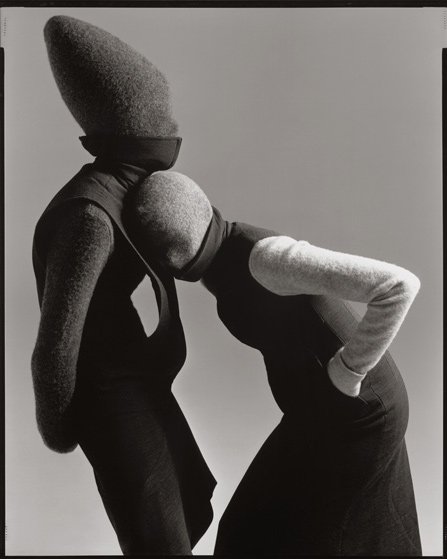Serge Lutens Boxeuses (2010): Whimsical Vanilla Leather or The Poetical Structure {Fragrance Review}

The other day, as I was starting to jot down some notes about the latest Serge Lutens to be released, Boxeuses (an upcoming 2011 release Jeux de Peau has just been unveiled to the press), I realized I was writing in French. It went on for a little while longer. My conclusion as I was thinking about the fragrance with en français was that this was a "cuir de vanille," "a leather vanilla." The facet stood out as the most unexpected aspect of a perfume composition which I anticipated would probably be dramatically, perhaps glaringly leathery, potentially being a retake on the classical genres of either the cuir d'Espagne or cuir de Russie leaving here aside the Moorishly-styled Cuir Mauresque which had already been proposed by the house. The latter is incidentally more widely accessible this winter in a new non-exclusive limited-edition flacon.
Setting to work in English, I had to make room for less Cartesian clarity and more complexity, becoming more sensitive to the hesitations, the transient truths of the fragrance than to the all-embracing resolution.
Boxeuses, which means "female boxers" in French, goes more in the direction of a creative deconstruction of the leather fragrance genre, eschewing classical references to propose seemingly unlikely encounters of notes as if they were chancing upon each others in a bottle. The weaving of the ingredients appears to be designed to startle a bit as in the more difficult Daim Blond, also by Serge Lutens and Christopher Sheldrake. But while Daim Blond is challenging by being brash as well, Boxeuses is challenging and soft and intimate with just a dash of elegant self-consciousness in its drop of chypré sillage. Its poetical structure creates a world in which female boxers caress and even cuddle you...

One imagines it is the aesthet in Lutens who felt the need to pull out his mind out of the drudgery of conventional boredom and distance himself from the desire to please, usually by appearing smoother than his eccentric self can be as in the more classic Nuit de Cellophane, Un Lys or Bas de Soie. Lutens fans who think he is one type rather than the other will no doubt think he takes breaks in-between fragrances that shake up our set visions of the world a bit more. But the truth of the matter is that his collection of fragrances makes up a body of work and that if there is such regularity in both classicist outputs as there is in more unconventional perfumes, then this must be the authentic range of his talent.
Boxeuses offers this slightly kaleidoscopic and heteroclitc aspect that one can find in a Lutens brew. It is less so than in Mandarine Madarin, but more clearly accentuated than in some other of his other perfumes. His fragrances seem to offer particularly transparently this capacity of perfume of translating ideas and a person's unique psychology. In this manner and as in the more complex Lutens compositions, one gets a sense that the perfume owes much to his own mental maze and way of thinking.
Boxeuses is a leather perfume with whimsical facets of both fresh and crystallized fruits, animalic aromas hesitating between the beach and the barnyard, and a surprise mellow vanilla which makes you think that the female boxers are not wearing punching gloves but vanilla and strawberry swirl lollipops in the shape of boxing gloves: yes, there are even candied, gourmand nuances to make the assault feel more tender. As stated in the press release, this is about "strokes of elegance" rather than physical punches.
The composition is a sweet, balmy and smoky leather perfume with tart, fruity berry nuances reminiscent of Chypre Rouge, another deconstructivist fragrance of a classic genre, the chypré scent. The woody-fruity-floral palette found in the seminal Bois de Violette by Serge Lutens can also be experienced in the background of Boxeuses.
The smoky leather tones mingle most remarkably with a cushiony, satisfying vanilla, which makes it one to compare with Un Bois Vanille, making you think of Italian soft-serve ice-cream, except it must be also melting under the sun of the Tropics because your nose can pick out overripe fruity scents like that of Jackfruit mixed with a hint of caramelized Durian candy. I am also reminded of exotic nuances of smoked bamboo shoot filled with sticky rice as in Sycomore by Chanel in which it is likely perfumer Christopher Sheldrake had a hand. The Oriental accord is reminiscent of some notes found in Yves Saint Laurent Opium Poésie de Chine, especially this vague whiff of the village fish market. The drydown, like in Fourreau Noir, lets out an oriental-chypré duality, the latter effect resting on an uplifting fruity tartness.
Where there is a sense of repose and coming-together of the heteroclitic aspect of the fragrance is in this fusioning of a white, creamy ans slightly sticky vanilla with a dark, hairy, bristly leather which wears close to the skin.
One finds, once more, a fascination in the Serge Lutens universe for the symbolic and extreme contrast of black and white which has been expressed perhaps most explicitly in the fragrance Serge Noire (see the original French version.) While many of the Lutens perfumes carry the word "noir" in their names starting with the inaugural Nombre Noir from 1982 now discontinued, but also Datura Noir, Fourreau Noir, and more implicitly in Rose de Nuit, A La Nuit, while the color black glistens in Five O'Clock au Gingembre and is suggested by the nocturnal quality of Sarrasins, whiteness is most glaring in the Lutensian universe as displayed on the made-up faces and bodies of his female models who appear as constant reminders of the pale, moonlit geisha ritual of makeup. The metaphor of the boxing ring intervenes to make us better understand this structural opposition: "What is remarkable in a fight is the contrast of styles."
Boxeuses is a feminine and one could say almost child-like leather composition which strikes you not only for its whimsical aspects but for its originality or its wish to explore the distances that separate notes rather than their obvious harmonies. Only the vanilla seems to play this harmonizing - some would not hesitate to say, all too easy - role of blending in asperities. But the paradox is here really that the smoothing edge of vanilla is made to feel like the most unlikely, unexpected and incongruous pairing with leather.
To be able to use vanilla both for its harmonizing and disharmonizing potentials at the same time is a superbly economical idea and conveys a sense of conceptual mastery. It works, and it works in ways different than for the vanilla-leather Shalimar by Guerlain of which you think only in the very end and in an intellectual manner, which is yet another feat. The senses are fooled while the mind sees.To be able to be very close to the tradition yet resolutely distanced from it at the same time seems impossible. Yet, once more, perfume reveals its uncanny ability to meld clashing opposites and apparent contradictions.
Perfume is an art of the totality, like poetry and Serge Lutens is probably the person who has best brought out this aspect of the art of perfumery by making curves of drying and evaporation secondary to the textual structuring of a perfume.









